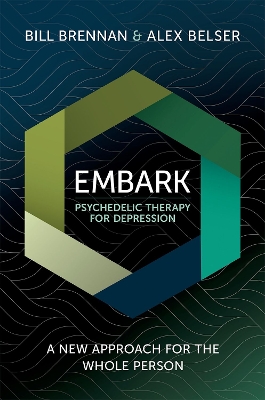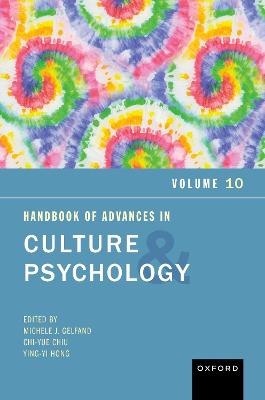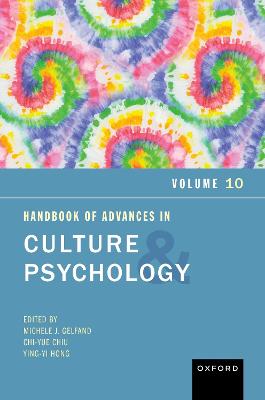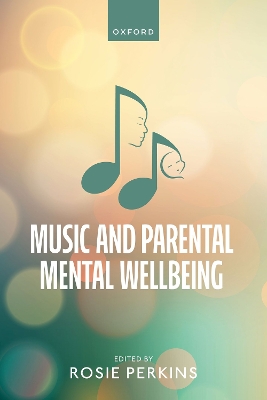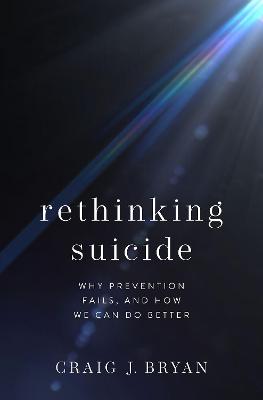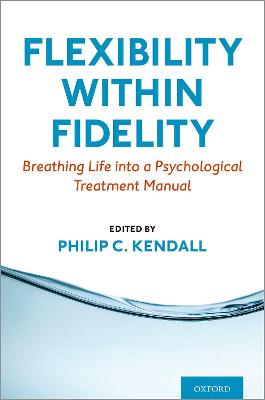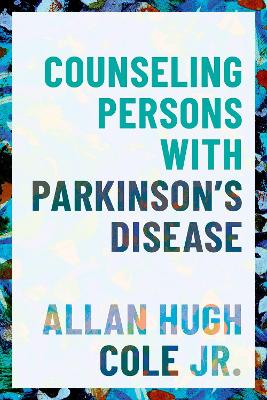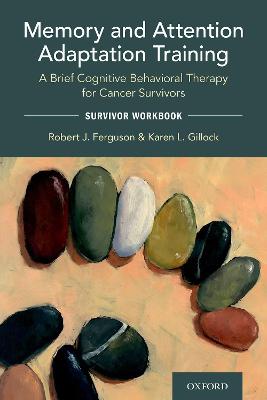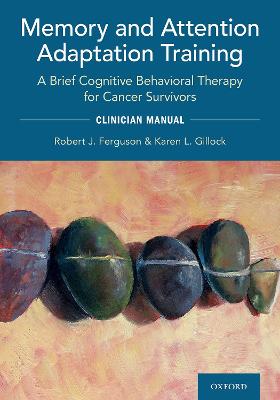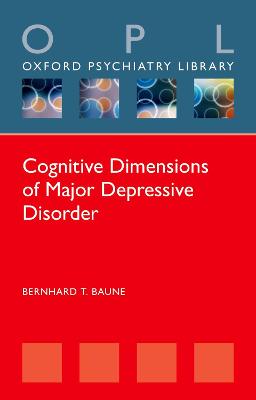Oxford Handbook of Cognitive Analytic Therapy
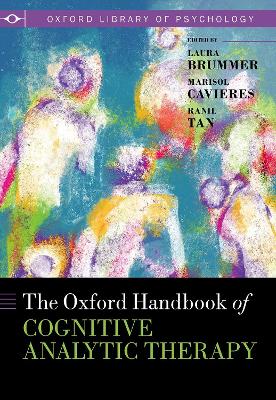 -10%
portes grátis
-10%
portes grátis
Oxford Handbook of Cognitive Analytic Therapy
Brummer, Dr Laura; Cavieres, Dr Marisol; Tan, Dr Ranil
Oxford University Press
03/2024
976
Dura
9780198866572
15 a 20 dias
1: Laura Brummer, Marisol Cavieres, and Ranil Tan: Overview to the Oxford Handbook of Cognitive Analytic Therapy
2: Ian B. Kerr and Hilary Beard: The evolving CAT model and its current core features
SECTION TWO: CAT THEORY AND MODEL DEVELOPMENT
3: Eva Burns-Lundgren: Theoretical underpinnings of CAT
4: Jason Hepple: The 'D' in CAT
5: Mark Westacott: The development of the multiple self states model
SECTION THREE: CAT PRACTICE
6: Deborah Tee: The structure of therapy
7: Alison Jenaway: Reformulation: Creating a shared understanding in CAT
8: Elizabeth Wilde McCormick: Recognition: The development of a compassionate observing eye
9: Julie Lloyd: Revision: Understanding how change is achieved
10: Deborah Pickvance: Endings in CAT
SECTION FOUR: UNDERSTANDING PEOPLE IN THEIR SOCIAL, CULTURAL AND POLITICAL CONTEXT
11: Rhona Brown: CAT in social context
12: Jessie Emilion: Othering and otherness in CAT: Exploring race, racism, and racial dialogues within a relational framework
13: Anne Benson and Josephine F. Discepolo Ahmadi: Gender, sexuality, and CAT
SECTION FIVE: DEVELOPMENTS IN CAT THEORY, RESEARCH, AND PRACTICE
14: Dawn Bennett, Glenys Parry, and Liz Fawkes: Working with enactments in CAT
15: Steve Potter: Mapping and writing as a co-creative therapeutic process
16: Stephen Kellett, Alex D. Young, Jason Hepple, and Stephen White: Eight session CAT: The evidence and the approach
17: Laura Brummer and Cheryl Delisser: Group CAT
18: Glenys Parry: Do no harm: Balancing risk and safety in CAT
19: Peter James Taylor, Olympia Gianfrancesco, and Samantha Hartley: Evaluating CAT: Research practice and future direction
20: Mikael Leiman: Semiotic object relations theory (SORT) as the basic CAT theory?
SECTION SIX: APPLICATIONS OF CAT
21: Sarah Douglass: CAT in the perinatal period
22: Nick Barnes: A cognitive analytic approach for working alongside young people
23: Louise K. McCutcheon, Jessica O'Connell, and Andrew M. Chanen: Helping young people early: A model of early intervention for people living with a diagnosis of borderline personality disorder
24: Julia Coleby, Sarah Haycock, Jill Finnigan, Hannah Roberts, and Caroline Wyatt: Getting the balance right: CAT for eating distress
25: Claire Wilson: Using CAT to understand and work with complex trauma: Asylum seeker and refugee populations
26: Ranil Tan, Alex Perry, and Olympia Gianfrancesco: CAT and psychosis: Working with unusual experiences and extreme states
27: Mark Evans: CAT for people with a diagnosis of bipolar disorder
28: Natalie Bork and Jo Varela: CAT and intellectual disability: Working with individuals and systems
29: Marisol Cavieres and Ranil Tan: CAT within adult mental health inpatient settings
30: Mark Ramm and Karen Shannon: CAT within forensic settings part one: An overview
31: Kerry Manson, Sue Ryan, and Peter Lock: CAT in forensic settings part two: Clinical applications
32: Karen Addy: Clinical neuropsychology: The use of the multiple self states model to understand behaviour following traumatic brain injury
33: Nadine Bearman and Alison Jenaway: A relational approach to working with medically unexplained symptoms (or not yet explained symptoms)
34: Andrew R. Thompson and John R. Fox: CAT for long term health conditions
35: Susie Black and Jason Davies: CAT in a cancer setting: Working with people with cancer, carers, and staff
36: Michelle Hamill, Ellen Khan, and Paul Catlin: Attending to later life: A CAT approach to working with the legacy of complex trauma
SECTION SEVEN: CAT WITHIN AND ACROSS SYSTEMS
37: Angela Carradice and Andrea Daykin: Five session CAT care planning approach
38: Sarah Craven-Staines and Jayne Finch: CAT consultancy for enhancing team functioning
39: Sue Walsh and Kate Freshwater: 'Struggling well': Using CAT to make sense of organisational hurt
40: David Harvey: CAT-informed leadership: Navigating the emotional and relational pressures of the workplace
SECTION EIGHT: INCORPORATING OTHER THERAPEUTIC APPROACHES AND TOOLS WITHIN CAT
41: Kim Dent-Brown: Adapting the six-part story method (6PSM) to CAT
42: Pam Jameson: Incorporating compassion focused therapy into CAT: Theory, perspectives, and applications
43: Mark J. Walker: Incorporating eye movement desensitisation and reprocessing (EMDR) into CAT
44: Yvonne J. Stevens and Vicky Petratou: Creativity in CAT and the contributions of arts therapies to its theory and practice
45: Tim Sheard: Embodiment as a relational resource in CAT when working with developmental trauma
46: Cal Nield: CAT and technology: Where do we meet?
SECTION NINE: PROFESSIONAL ISSUES AND REFLECTIVE PRACTICE
47: Lindsay Jones and Phyllis Annesley: Developing relational reflective practice for individuals and teams: The 4Ps framework
48: Yvonne J. Stevens and Jay Dudley: Relational supervision in CAT
49: Dawn Bennett, Liz Fawkes, and Yvonne J. Stevens: Training in CAT
50: Glenys Parry and Dawn Bennett: Competence in CAT
51: Henrietta Batchelor: Ethics and CAT: Dare to be aware
SECTION TEN: CONCLUSION
52: Ian B. Kerr and Hilary Beard: Future developments and challenges for the current CAT model
APPENDIX: CAT TOOLS
Psychotherapy file
Psychotherapy file (adapted)
The personality structure questionnaire (PSQ)
The states description procedure (SDP)
Psycho-social checklist
Life chart
Rating sheets (2 examples)
1: Laura Brummer, Marisol Cavieres, and Ranil Tan: Overview to the Oxford Handbook of Cognitive Analytic Therapy
2: Ian B. Kerr and Hilary Beard: The evolving CAT model and its current core features
SECTION TWO: CAT THEORY AND MODEL DEVELOPMENT
3: Eva Burns-Lundgren: Theoretical underpinnings of CAT
4: Jason Hepple: The 'D' in CAT
5: Mark Westacott: The development of the multiple self states model
SECTION THREE: CAT PRACTICE
6: Deborah Tee: The structure of therapy
7: Alison Jenaway: Reformulation: Creating a shared understanding in CAT
8: Elizabeth Wilde McCormick: Recognition: The development of a compassionate observing eye
9: Julie Lloyd: Revision: Understanding how change is achieved
10: Deborah Pickvance: Endings in CAT
SECTION FOUR: UNDERSTANDING PEOPLE IN THEIR SOCIAL, CULTURAL AND POLITICAL CONTEXT
11: Rhona Brown: CAT in social context
12: Jessie Emilion: Othering and otherness in CAT: Exploring race, racism, and racial dialogues within a relational framework
13: Anne Benson and Josephine F. Discepolo Ahmadi: Gender, sexuality, and CAT
SECTION FIVE: DEVELOPMENTS IN CAT THEORY, RESEARCH, AND PRACTICE
14: Dawn Bennett, Glenys Parry, and Liz Fawkes: Working with enactments in CAT
15: Steve Potter: Mapping and writing as a co-creative therapeutic process
16: Stephen Kellett, Alex D. Young, Jason Hepple, and Stephen White: Eight session CAT: The evidence and the approach
17: Laura Brummer and Cheryl Delisser: Group CAT
18: Glenys Parry: Do no harm: Balancing risk and safety in CAT
19: Peter James Taylor, Olympia Gianfrancesco, and Samantha Hartley: Evaluating CAT: Research practice and future direction
20: Mikael Leiman: Semiotic object relations theory (SORT) as the basic CAT theory?
SECTION SIX: APPLICATIONS OF CAT
21: Sarah Douglass: CAT in the perinatal period
22: Nick Barnes: A cognitive analytic approach for working alongside young people
23: Louise K. McCutcheon, Jessica O'Connell, and Andrew M. Chanen: Helping young people early: A model of early intervention for people living with a diagnosis of borderline personality disorder
24: Julia Coleby, Sarah Haycock, Jill Finnigan, Hannah Roberts, and Caroline Wyatt: Getting the balance right: CAT for eating distress
25: Claire Wilson: Using CAT to understand and work with complex trauma: Asylum seeker and refugee populations
26: Ranil Tan, Alex Perry, and Olympia Gianfrancesco: CAT and psychosis: Working with unusual experiences and extreme states
27: Mark Evans: CAT for people with a diagnosis of bipolar disorder
28: Natalie Bork and Jo Varela: CAT and intellectual disability: Working with individuals and systems
29: Marisol Cavieres and Ranil Tan: CAT within adult mental health inpatient settings
30: Mark Ramm and Karen Shannon: CAT within forensic settings part one: An overview
31: Kerry Manson, Sue Ryan, and Peter Lock: CAT in forensic settings part two: Clinical applications
32: Karen Addy: Clinical neuropsychology: The use of the multiple self states model to understand behaviour following traumatic brain injury
33: Nadine Bearman and Alison Jenaway: A relational approach to working with medically unexplained symptoms (or not yet explained symptoms)
34: Andrew R. Thompson and John R. Fox: CAT for long term health conditions
35: Susie Black and Jason Davies: CAT in a cancer setting: Working with people with cancer, carers, and staff
36: Michelle Hamill, Ellen Khan, and Paul Catlin: Attending to later life: A CAT approach to working with the legacy of complex trauma
SECTION SEVEN: CAT WITHIN AND ACROSS SYSTEMS
37: Angela Carradice and Andrea Daykin: Five session CAT care planning approach
38: Sarah Craven-Staines and Jayne Finch: CAT consultancy for enhancing team functioning
39: Sue Walsh and Kate Freshwater: 'Struggling well': Using CAT to make sense of organisational hurt
40: David Harvey: CAT-informed leadership: Navigating the emotional and relational pressures of the workplace
SECTION EIGHT: INCORPORATING OTHER THERAPEUTIC APPROACHES AND TOOLS WITHIN CAT
41: Kim Dent-Brown: Adapting the six-part story method (6PSM) to CAT
42: Pam Jameson: Incorporating compassion focused therapy into CAT: Theory, perspectives, and applications
43: Mark J. Walker: Incorporating eye movement desensitisation and reprocessing (EMDR) into CAT
44: Yvonne J. Stevens and Vicky Petratou: Creativity in CAT and the contributions of arts therapies to its theory and practice
45: Tim Sheard: Embodiment as a relational resource in CAT when working with developmental trauma
46: Cal Nield: CAT and technology: Where do we meet?
SECTION NINE: PROFESSIONAL ISSUES AND REFLECTIVE PRACTICE
47: Lindsay Jones and Phyllis Annesley: Developing relational reflective practice for individuals and teams: The 4Ps framework
48: Yvonne J. Stevens and Jay Dudley: Relational supervision in CAT
49: Dawn Bennett, Liz Fawkes, and Yvonne J. Stevens: Training in CAT
50: Glenys Parry and Dawn Bennett: Competence in CAT
51: Henrietta Batchelor: Ethics and CAT: Dare to be aware
SECTION TEN: CONCLUSION
52: Ian B. Kerr and Hilary Beard: Future developments and challenges for the current CAT model
APPENDIX: CAT TOOLS
Psychotherapy file
Psychotherapy file (adapted)
The personality structure questionnaire (PSQ)
The states description procedure (SDP)
Psycho-social checklist
Life chart
Rating sheets (2 examples)

